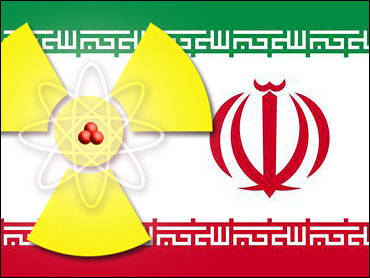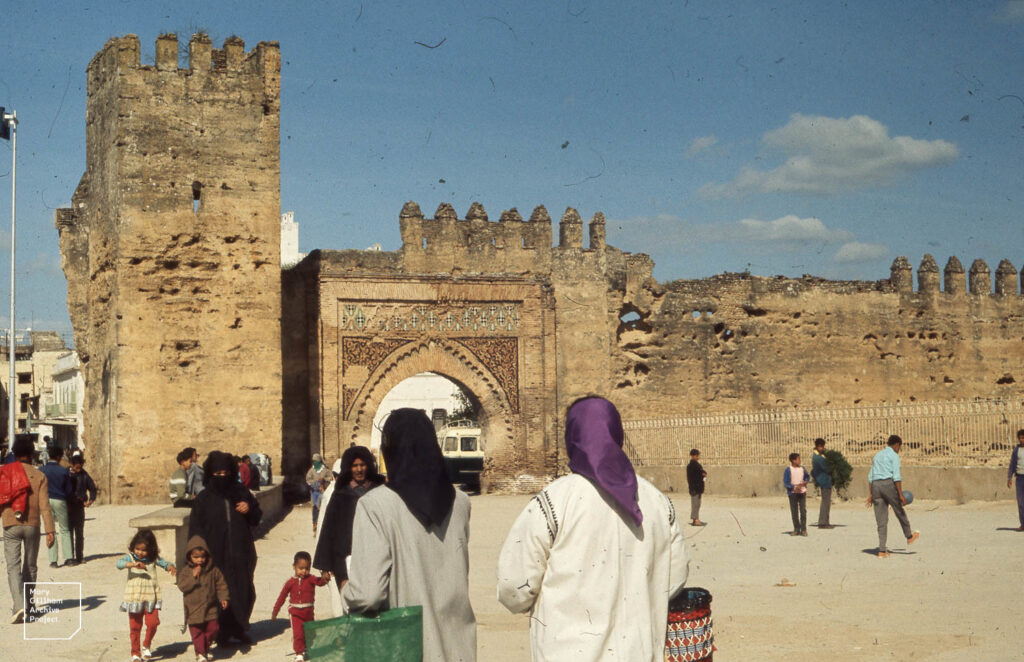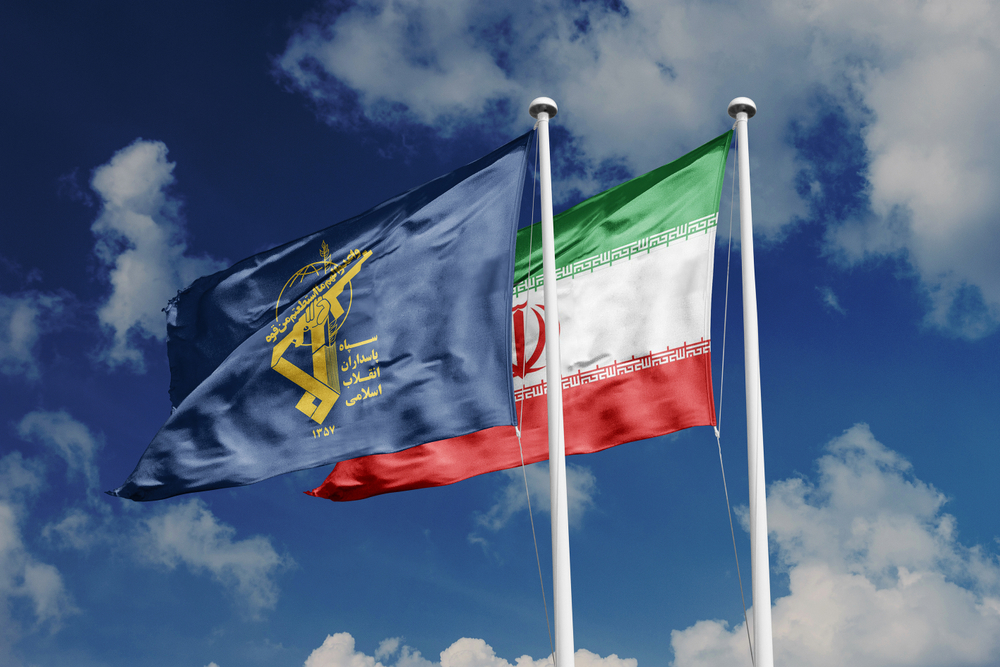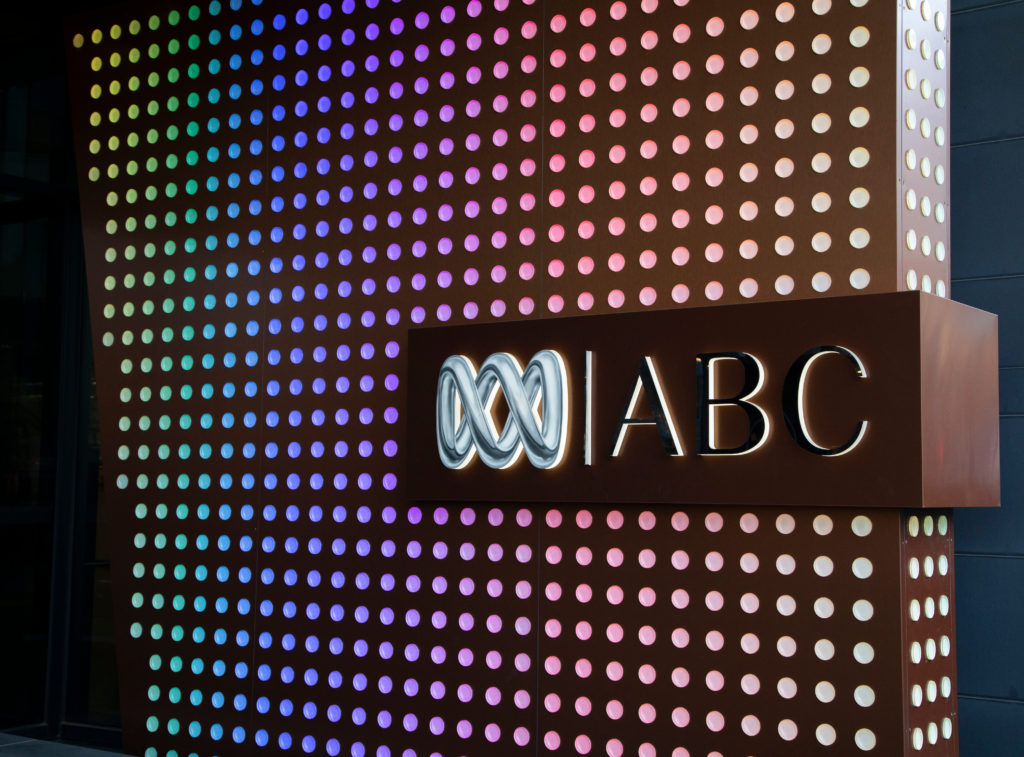UPDATES
Iran’s nuclear program: covert action, Fordow, policy options
January 18, 2012

Update from AIJAC
January 18, 2012
Number 01/12 #04
This Update offers threes pieces related to recent news on the ongoing crisis over Iran’s nuclear program.
First up, former security adviser to the British government Andrew Cummings explains the rationale behind the campaign of covert action against Iran, as epitomised by the killing of an Iranian nuclear scientist last week. Cummings argues that those who assert that such moves are dangerous fail to understand that the alternatives are even more risky and fraught. He points out that those who argue covert action will close the door to negotiations fail to note that, not only has Iran been deliberately avoiding any serious effort to negotiate despite pleas from Western countries, but Iran itself is the master of using covert operations against its enemies. For his full argument, CLICK HERE. Also arguing for the morality of such action is American writer and blogger Jonathan Tobin. Meanwhile, analysts Peter C Glover and Michael J. Economides discuss why the assumption that the covert attacks in Iran must be Israeli in origin are wrong.
Next up is former International Atomic Energy Agency deputy director-general Olli Heinonen, who discusses the significance of Iranian plans to move ahead with enriching uranium to 20% at the Fordow complex – a secret installation under a mountain which was only revealed in September. Heinonen notes that, alarmingly, enrichment to 20% exceeds Iran’s civilian needs and all of Teheran’s uranium is apparently going into this further enrichment process – leaving none for the claimed purpose of the Iranian program, civilian power generation. Finally, he points out, Iran is predicted to produce 4 to 5 bombs worth of 20% enriched uranium in a year, and it would take Teheran only a month to convert a bomb’s worth of this material into the highly-enriched uranium needed for a nuclear weapon. For this important look at the technical reasons Iran’s latest moves have provoked so much international alarm, CLICK HERE.
Finally, Cliff May describes the views of three renowned experts on the Iranian situation – doyen of Middle East historians Bernard Lewis, former Mossad head Meir Dagan, and Iranian-born veteran Israeli diplomat Uri Lubrani. He describes how all three insist that the key to the Iranian nuclear crisis is the Iranian people, who oppose the current regime – and that there is considerable scope for assisting them to change it. May goes on to offer a six point plan to do this based on what he heard from Lewis, Dagan and Lubrani. For all the details, CLICK HERE. Meanwhile, Mark Dubowitz and Reuel Marc Gerecht offer a comprehensive plan for sanctions against Iran’s Central Bank designed to alter the Iranian regime and empower the Iranian opposition.
Readers may also be interested in:
- Noted military historian Victor Davis Hanson looks at the implications of the considerable sabre-rattling by Iran over recent weeks – threatening to close the vital Straits of Hormuz, defiantly starting Fordow, harassing US Navy ships, and even threatening the US if it returns an aircraft carrier to the region – and argues, using historical examples, that we should not discount the possibility of war breaking out even it looks irrational from Iran’s point of view.
- A different view on Teheran’s sabre-rattling comes from Washington Institute specialist Michael Singh. However, foreign policy specialist Walter Russell Mead notes that Iranians on the street appear to believe that war is imminent.
- Persian Gulf states show signs of a new assertiveness vis-a-vis Iran.
- Good editorials on Iran policy – including covert action against the nuclear program – from the Jerusalem Post and Wall Street Journal.
- Jeffrey Goldberg on what an empowered Iran would do to the Israeli-Palestinian peace process.
- Former Iranian Revolutionary Guard activist turned American spy Reza Kahlili says major cracks are appearing in Guard ranks which Western policymakers can potentially exploit.
- Responding to a much-reported claim by Foreign Policy‘s Mark Perry – a former adviser to Yasser Arafat – that Mossad agents posed as CIA agents to recruit Iranian operatives in 2008, Michael Rubin suggests numerous reasons to doubt his sources, while veteran Israeli columnist Evelyn Gordon notes that Israel has made a rare denial of the story, and the behaviour of American Administrations makes the story seem highly unlikely.
- Responding to a New York Times piece by Shibley Telhami and Steven Kull arguing that the key to getting Iran to give up its nuclear plans is for Israel to give up its nuclear capability in exchange, Martin Kramer points out that Teheran is not seeking nukes to counter Israel’s and therefore won’t give them up just because Israel does. Israeli journalist Shmuel Rosner points out an additional contradiction in what they propose. Similarly, Jonathan Tobin also takes on flaws in the article’s argument.
- International Law Professor Louis René Beres looks at Israel’s options in law in the face of the Iranian nuclear threat.
- A new crackdown in Iran on the terrible scourge represented by Barbie dolls.
- On Syria, Anwar Malek, a former Arab League observer from Algeria describes what he saw inside Syria and how he fled the country in fear of his life. More from inside Syria, including interviews with opposition figures on how the protests continue to be organised in the face of overwhelming repression, here.
- Analysis of Syrian President Assad’s recent uncompromising speech, condemning the Arab League – here and here.
- A report on signs that Syria is heading into a civil war. Plus comment on this likelihood from military specialist Max Boot.
-
Noted academic expert Fouad Ajami on why the Syrian people are on their own in terms of both he West and the Arab League. Also taking on the Arab League’s indecision and impotence is Lebanese writer Michael Young.
- Some examples from the many stories and comments now appearing at AIJAC’s daily “Fresh AIR” blog:
-
A post on what Hamas really believes, despite recent claims it has “moderated.”
- A post on the bizarre reaction of one Australian writer to the assassination of an Iranian nuclear scientist – a demand that Israeli companies be boycotted.
-
A covert campaign is the only way to stop Iran’s nuclear ambitions
The death of another Iranian scientist has led to criticism of such actions, but Tehran’s refusal to co-operate leaves little alternative
Andrew Cummings
Guardian, Thursday 12 January 2012
As yet another Iranian scientist becomes the victim of increasingly bold and creative attempts to disrupt and delay the Iranian nuclear programme, commentators around the world have lined up to point out the risks to this audacious approach.
It is true, as both Julian Borger and Saeed Kamali Dehghan pointed out, that whoever is doing this risks profound consequences for the region. What many people fail to recognise, though, is that a covert campaign, while rife with physical, diplomatic and legal risks, is the lesser of many evils.
No one should doubt that the west (and Israel) desire a negotiated settlement to Iran’s nuclear programme. The Stuxnet virus, mysterious explosions at military bases and the James Bond-esque antics of motorcycle assassins have taken up many column inches, while less has been written about the efforts of the E3+3 (China, France, Germany, Russia, the UK and US) to reach a diplomatic solution.
Since 2003, western powers, working closely with their often-resistant Russian and Chinese counterparts, have kept the door open to Iran to negotiate. This has been despite continual provocation, whether in the form of secret enrichment facilities such as the one outside Qom or in Iran’s bellicose pronouncements regarding enrichment.
The E3+3 continues to hold out a generous offer to Iran: give up your military programme that even the International Atomic Energy Agency has expressed concern about and receive economic investment and a properly safeguarded modern civil nuclear programme. That would be a good deal in most people’s eyes.
A military campaign is one alternative to a diplomatic solution. The debate around the pros and cons is unlikely to reduce any time soon. Meir Dagan, Israel’s former spy chief, has been one notable voice sounding caution, with the US Republican presidential candidate Rick Santorum at the opposite end of the spectrum, preparing to fuel US fighter jets if he becomes the US’s next commander in chief.
Many commentators argue that supporters of a covert campaign see it as an alternative to war. They warn that covert action will ruin chances of dialogue with Tehran while encouraging Iran to use its own covert operations. What this fails to recognise is that Iran has long been the master of covert operations.
Through the Revolutionary Guards (IRGC), Iran has been responsible for increasing the efficacy of insurgent improvised bombs in both Iraq and Afghanistan. It has helped to prop up Bashar al-Assad’s murderous regime in Syria and has a track record of attempting to assassinate or imprison its enemies – both at home and abroad.
Instead of damaging the chances of dialogue, covert action might actually do the opposite. All those who have been involved in negotiating with Iran understand the difficulties involved. Iran’s leaders continue to see the Islamic Republic through its long and rich history as a regional and world power rather than through its modern reality as an isolated pariah state with a weak economy that oppresses its brave citizens while rigging “democratic” elections. As a result, the supreme leader has consistently refused to allow his negotiators to engage in a meaningful dialogue. Instead, Iran has held out the prospect of talks while more often than not refusing to even put the nuclear issue on the agenda. The E3+3, in their desire to keep the door open, have accepted these talks, but have never seen any fruits from their labour.
The one notable exception to this was in October 2003, when, surrounded by hundreds of thousands of US troops in Afghanistan and Iraq, and having seen its closest neighbour toppled, the supreme leader authorised the signing of the Tehran declaration. This agreement with the UK, France and Germany led to the temporary suspension of Iran’s uranium enrichment and demonstrated that, when faced with an existential threat to the regime, Iran was willing to deal.
What followed, however, was an uprising in Iraq (assisted by Tehran), stalemate in Afghanistan (assisted by Tehran) and a reduction in pressure as the international community focused on other issues, believing the problem was being solved.
To deliver a negotiated settlement needs a comprehensive strategy. Covert action, increasingly robust sanctions, along with a credible threat of military action remain one half of the E3+3’s dual-track strategy of pressure and engagement that was recently restated by the British foreign secretary. Covert action carries risks, but does not impact on the brave Iranian people that the Iranian authorities continually oppress.
Covert action creates the time and space for pressure to build, while reducing the need for military action. Ultimately, covert action should be aimed at bringing enough pressure to bear on Iran’s leaders so that they understand they will never reach their goal of being a nuclear power. It is only at that point diplomacy can have any hope of success.
Andrew Cummings was formerly an adviser on the Middle East and US affairs in the UK cabinet office national security staff.
Back to Top
————————————————————————
The 20 Percent Solution
Iran’s provocative uranium-enrichment program is at the center of its confrontation with the West. It’s also, potentially, the way out.
Foreign Policy, JANUARY 11, 2012
On Monday, Jan. 9, the International Atomic Energy Agency (IAEA) confirmed that Iran had begun producing 20 percent enriched uranium at Fordow, a fuel enrichment plant buried deep underground near the holy city of Qom. On the surface, there is little new here: Since February 2010, Iran has been producing 20 percent enriched uranium at Natanz, another once-secret site located about 3 ½ hours from Tehran.
Iran disclosed neither the Natanz nor the Fordow site to the IAEA until forced to do so, in 2002 and 2009, respectively, when outside observers discovered and publicized them. Fordow is smaller than Natanz in scale, but better protected from prying satellites and, potentially, a bombing campaign. Worryingly, the plant appears designed to focus on producing higher enrichments.
What has raised the world’s suspicions is that Iran continues to produce 20 percent enriched uranium despite the fact that this exceeds its civilian needs and, as President Mahmoud Ahmadinejad acknowledged in September, does not make economic sense.
There are serious concerns over the proliferation aspects of Iran’s enrichment activities. Increasing stockpiles of enriched uranium, together with studies related to an advanced nuclear weapon design, are building blocks for attaining a virtual nuclear weapon capability. (A state has a virtual nuclear arsenal if it possesses weapons-usable nuclear material and the knowledge and experience needed to design, manufacture, assemble, and deploy nuclear weapons.) So Iran’s recent announcement that it plans to increase production of 20 percent enriched uranium is alarming.
Over the last few days, Iran has begun operating two enrichment cascades at Fordow. Furthermore, Iran is completing installation of two additional cascades, with their planned operation already announced. Once the four cascades at Fordow, in addition to the two Natanz ones, are operating, Iran will be able to produce 15 kg of 20 percent enriched UF6 (uranium hexafluoride) per month. This process uses as feed 3.5 percent enriched uranium, which is produced currently at a rate of 140 to 150 kg UF6 per month at Natanz.
This means that Iran’s entire uranium-enrichment program is now being devoted to producing 20 percent enriched uranium. At current production rates, Iran can expect to have a stock of 20 percent enriched uranium of around 250 kg UF6 by the end of 2012, as well as more than 4 tons of 3.5 percent enriched UF6. (These estimates are based on the use of IR-1 centrifuges, which are now also operating at Fordow.) Iran will not likely be able to commission a large number of more advanced and powerful centrifuges before 2013. But if that happens, it will be an altogether different scenario.
If Iran decides to produce weapons-grade uranium from 20 percent enriched uranium, it has already technically undertaken 90 percent of the enrichment effort required. What remains to be done is the feeding of 20 percent uranium through existing additional cascades to achieve weapons-grade enrichment (more than 90 percent uranium). This step is much faster than the earlier ones. Growing the stockpile of 3.5 percent and 20 percent enriched uranium, as Iran is now doing, provides the basic material needed to produce four to five nuclear weapons. With IR-1 centrifuges, it would take half a year to go from 3.5 percent enriched uranium to weapons-grade material for the first nuclear device. More advanced centrifuges would cut the time required in half. If, however, IR-1s are using 20 percent enriched uranium as a feed, 250 kg UF6 with that level of enrichment can be turned to weapons-grade material in a month’s time. This does not automatically mean Iran will be able to build a nuclear weapon in one month — building an atomic bomb is a complex endeavor that requires precision engineering capabilities that Iran may lack — but it does mean that the country would be able to “break out” of its international obligations very quickly should it decide to do so.
How can Iran convince the international community that its nuclear program will follow a peaceful track?
There are a few ways to go about it. One way would be to suspend the production of enriched uranium and convert the existing 3.5 percent and 20 percent enriched uranium stocks, with the assistance of the international community, to fuel for the Tehran Research Reactor, as well as for another modern research reactor that could be provided to Iran. This approach would be good for Iran, as it would give the country a sustainable production of radioisotopes for industrial and medical uses in the shortest time.
Iran would also have to address the world’s concerns about the military dimensions of its nuclear program, concerns laid out in the IAEA’s most recent monitoring report. So far, Iran’s leaders have failed to do so, despite being signatories to the Nuclear Non-Proliferation Treaty. With sanctions beginning to bite, tensions growing in the Persian Gulf, and international patience running out, there’s no time like the present.
Olli Heinonen, a senior fellow at the Harvard Kennedy School’s Belfer Center for Science and International Affairs, is a former deputy director general of the International Atomic Energy Agency, where he headed its Department of Safeguards.
Back to Top
————————————————————————
The Historian, the Diplomat, and the Spy
How the experts see the threat posed by Iran’s rulers.
Clifford D. May
5th January 2012 – Scripps Howard News Service
Iran is not our enemy. The regime that enriches itself while murdering, oppressing, and impoverishing ordinary Iranians; the regime that incites genocide against Israel, threatens its neighbors in the Persian Gulf, and vows to bring about a “world without America” — that is our enemy. This was one of the key points driven home by a trio of extraordinary individuals gathered for a dinner in Tel Aviv last week.
At the table were Bernard Lewis, for my money the greatest living historian of the Middle East; Uri Lubrani, Israel’s envoy to Iran prior to the fall of the Shah and an advisor to leaders of the Jewish state ever since; and Meir Dagan, a retired paratrooper, commando, and general who was recruited in 2002 by then-prime minister Ariel Sharon to rebuild the Mossad as an intelligence agency “with a knife in its teeth.” (Dagan stepped down from that post in 2010 and has been increasingly outspoken ever since.) A small group of young American national-security professionals — from the Hill, the Defense Department, Homeland Security, even the D.C. police department — broke pita with them. None of the three minimizes how dire will be the consequences should Mahmoud Ahmadinejad’s finger come to rest on a nuclear trigger. The Iranian president subscribes to an extremist school of Shia theology that, General Dagan explained, looks forward to an apocalyptic war that would “hasten the arrival of the Mahdi,” mankind’s ultimate savior. But he thinks Ahmadinejad and his associates are not as close as many analysts believe to acquiring a nuclear capability. “Two years to have such a weapon, in my estimation,” he said.
If that is correct — a big if — it means we have a little time to find out whether tough measures short of military force can be effective. Dagan notes, too, that bombing Iran’s nuclear facilities would not end the regime’s pursuit of nuclear weapons: It will only delay it by perhaps two or three years. The technology, the expertise, and the components are all too readily available. North Korea and Pakistan both have them — and both have proliferated them before.
The larger point is this: Guns don’t kill people; people kill people. It is the regime that rules Iran, more than weapons or the facilities in which they are produced, that constitutes the real problem. From that it follows that changing the regime — not destroying its hardware — is the higher goal.
Ambassador Lubrani, who predicted Iran’s 1979 revolution — when then-president Jimmy Carter, among others, saw Iran as “an island of stability” — believes regime change is a realistic goal. Indeed, he is convinced there will be another Iranian revolution and that it can come about sooner rather than later — soon enough rather than too late.
Which raises the question: Based on the analyses of the historian, the diplomat, and the spy, can a coherent strategy be constructed? Can we in the West belatedly learn, as Lubrani put it, to play chess, a game of strategy invented in Iran? I’d argue that such a strategy might begin with six specific policies.
1. Tighten the sanctions noose to maximally increase pressure on the Iranian economy. That must be done carefully: Spooking oil markets and raising the price of oil will put more money, not less, into the regime’s coffers. But sanctions can work if we focus on reducing oil revenues to Iran. European countries should impose an embargo on purchases. Other countries should drive for discounts. The fewer the buyers, the higher the discounts — and the lower Iran’s oil revenue.
2. Isolate the regime diplomatically — for real. Long ago, when Ayatollah Khomeini ordered the execution of a British novelist for “insulting” Islam, or when Iranian officials first talked of wiping Israel off the map, or when, most recently, the British embassy in Tehran was attacked, serious diplomatic isolation should have been imposed: no funding of international agencies manipulated by Iranians, no visits to New York for Ahmadinejad or to Europe for Iranian oil czars, don’t even let Iran’s planes land in at Western airports. Now is the time.
3. Do not underestimate the potential for high-tech, cutting-edge cyber weapons to further delay the Iranian nuclear-development program. The Stuxnet worm, a cyber weapon for which no one has claimed credit, set Iran’s program back by at least a year. The West must maintain an offensive and defensive lead in this critical, new field of warfare.
More conventional clandestine measures also can play a role — things that go boom in the night and the untimely deaths of individuals contributing to illegal nuclear-weapons development. (None of the above should be discussed more than necessary in public forums, by the way.)
4. The threat of force must be credible. Iran’s rulers should lose sleep over the possibility that a military strike — against their nuclear facilities or against them more directly — may be seen by Americans and Israelis as the least bad option.
5. Help Syria break free of Iran. Under Bashar al-Assad, Syria has been Iran’s bridge into the Arab and Sunni worlds. Syria also has been the patron of Hezbollah, Iran’s terrorist foreign legion, and Hamas as well. An incredibly brave Syrian opposition is attempting to bring down the dynasty. The loss of Syria would be a heavy blow to the Tehran regime. America and the West should be doing all they can to support the rebels. 6. Iran’s anti-regime opposition also deserves moral support and material assistance. That should have begun in 2009 when, in the wake of blatantly fraudulent elections, mass protests broke out with demonstrators chanting: “Obama! Are you with us or against us?” Professor Lewis lamented: “We have not done a damn thing to help them. It’s a mind-boggling absurdity.”
In addition to all of the above, recognize that this has become the top national-security priority: In what has been misperceived as an “Arab Spring,” the downtrodden masses in Egypt and elsewhere now may be coming to the conclusion that “Islam is the answer.” Iranians, having tested that proposition over decades, know it is the wrong answer. Rule by mullahs has made them less free and poorer than they ever were under the Shah. Lewis, Lubrani, and Dagan agree that these disenchanted Iranians may offer the last, best hope for the Muslim world — and for winding down the global war against the West.
The alternative is to risk the possibility that jihadis with global ambitions and nuclear weapons will make the 21st century history’s bloodiest era. That is the most important point that Lewis, Lubrani, and Dagan are attempting to communicate — at a dinner last week in Tel Aviv and on other occasions.
— Clifford D. May is president of the Foundation for Defense of Democracies a policy institute focusing on national security and foreign policy.
Tags: International Security





